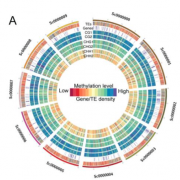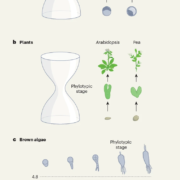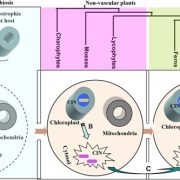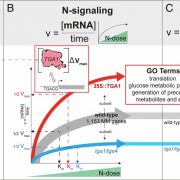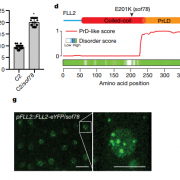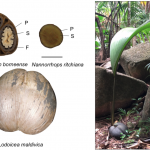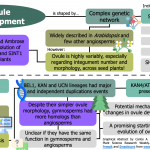Parallel Seed Color Adaptation during Multiple Domestication Attempts of an Ancient New World Grain ($) (Mol. Biol. Evol.)
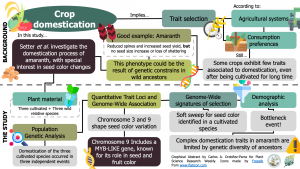 Amaranth has been cultivated in Central and South America since Pre-Columbian times. Still, it exhibits features that are unexpected in domesticated plants, such as seed shattering and reduced seed size. Here, Setter et al. dissected the genetic signature of this crop’s domestication process, with a particular interest in mapping the genes responsible for seed color changes from dark seeds in wild relatives to white ones in domesticated amaranths. Genetic differentiation was higher between cultivated amaranths than between cultivated and wild relatives, suggesting each crop species was domesticated independently. Quantitative Trait Locus (QTL) and Genomic-Wide Association (GWA) analysis showed that seed color changes are controlled by loci located in chromosomes 3 and 9. Interestingly, the chromosome 9 locus includes an MYB-Like transcription factor, known for controlling pigmentation in plant structures. Given this simple genetic structure, the authors discuss that white seed color could be easily fixed in each independent domestication process. However, this might not be the case for traits with a more complex genetic regulation. In fact, the authors’ demographic analysis provides evidence of a bottleneck event that could have reduced the genetic diversity of ancestor plants and limit the genetic variability available to human selection. (Summary by Carlos A. Ordóñez-Parra @caordonezparra) Mol. Biol. Evol. 10.1093/molbev/msz304
Amaranth has been cultivated in Central and South America since Pre-Columbian times. Still, it exhibits features that are unexpected in domesticated plants, such as seed shattering and reduced seed size. Here, Setter et al. dissected the genetic signature of this crop’s domestication process, with a particular interest in mapping the genes responsible for seed color changes from dark seeds in wild relatives to white ones in domesticated amaranths. Genetic differentiation was higher between cultivated amaranths than between cultivated and wild relatives, suggesting each crop species was domesticated independently. Quantitative Trait Locus (QTL) and Genomic-Wide Association (GWA) analysis showed that seed color changes are controlled by loci located in chromosomes 3 and 9. Interestingly, the chromosome 9 locus includes an MYB-Like transcription factor, known for controlling pigmentation in plant structures. Given this simple genetic structure, the authors discuss that white seed color could be easily fixed in each independent domestication process. However, this might not be the case for traits with a more complex genetic regulation. In fact, the authors’ demographic analysis provides evidence of a bottleneck event that could have reduced the genetic diversity of ancestor plants and limit the genetic variability available to human selection. (Summary by Carlos A. Ordóñez-Parra @caordonezparra) Mol. Biol. Evol. 10.1093/molbev/msz304


